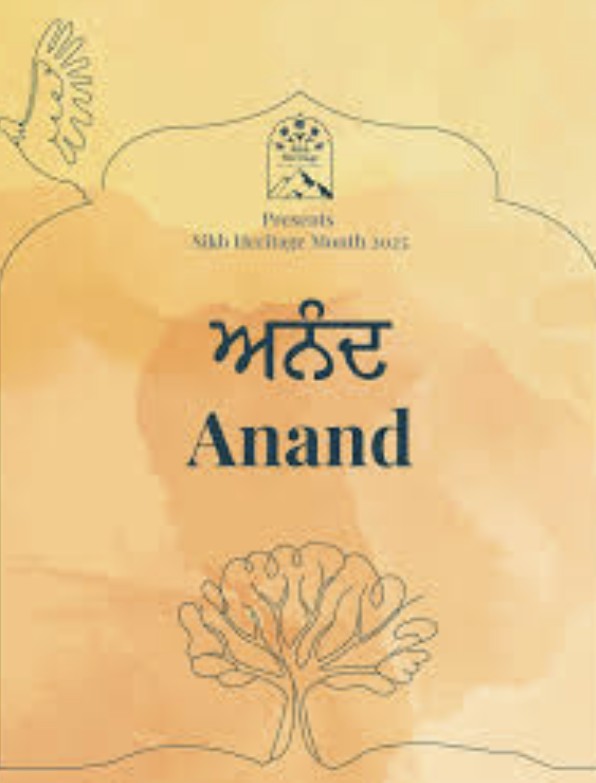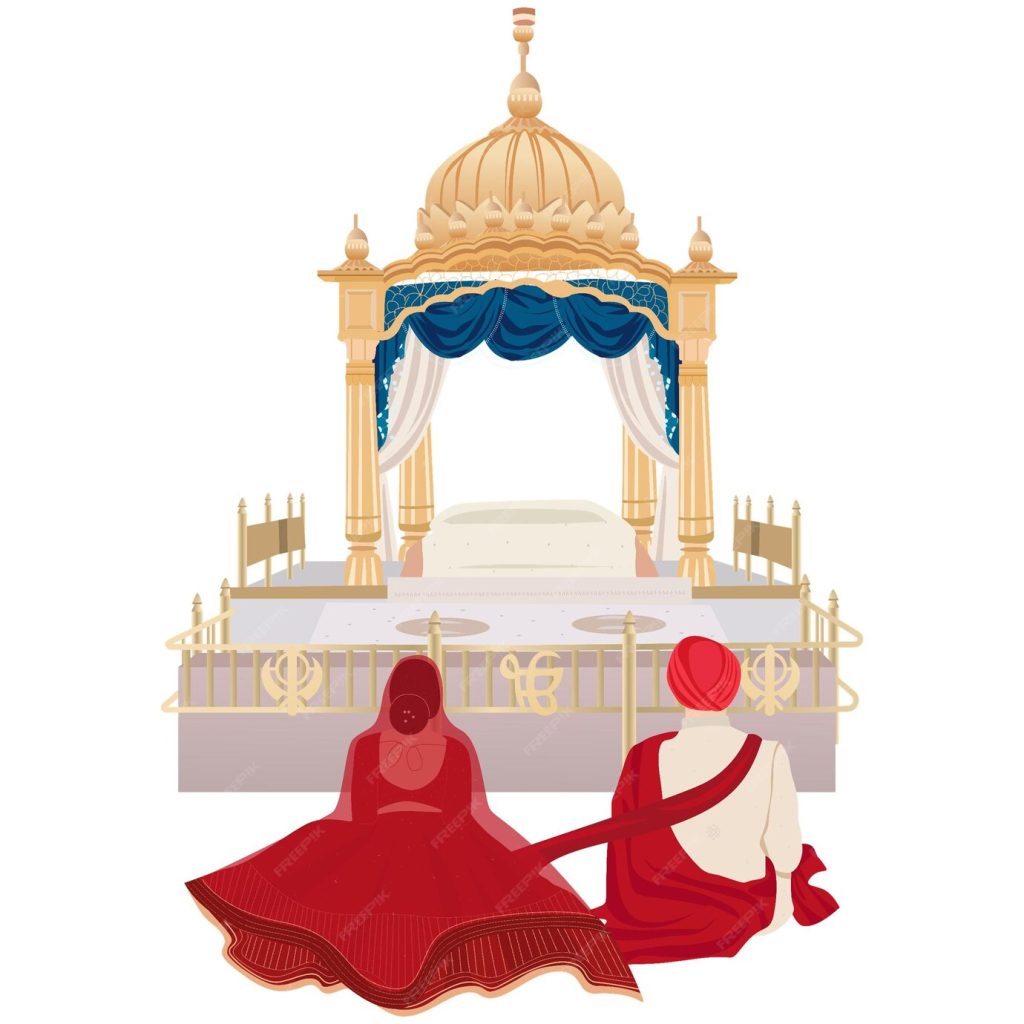ANANDGHANA, SVAMI, an Udasi sadhii known for the commentaries he wrote on some of the Sikh scriptural texts. Not much biographical detail is available about him, but references in his own works indicate that he was a disciple of Baba Ram Dayal, an Udasi ascetic; also, that he was born into the family of Guru Nanak, tenth in descent from him. Since his first tika, a commentary on the Japu, was completed in 1852 Bk/AD 1795, it may be presumed that he was born around the middle of the eighteenth century. He spent the early years of his life at Dera Baba Nanak where he was born.
ANAND, BABA, was the second son of Baba Mohri and a grandson of Guru Amar Das. He received his name from the Guru himself who also uttered a long hymn in Ramkali measure calling it Anandu. The hymn has since formed an important part of Sikh liturgy. Baba Anand lived up to the time of the Sixth Guru, Guru Hargobind (1595-1644), who held him in high esteem. He once sent messengers, with a palanquin, to escort Baba Anand to Kiratpur. The Guru himself came out to receive him as he arrived.
ANAND MARRIAGE ACT was passed in 1909 by the Imperial (i.e. GovernorGeneral`s) Legislative Council to establish legal "validity of the marriage ceremony common among the Sikhs called Anand." The origins of marriage by Anand ceremony go back to early Sikhism. The practice which somewhat lapsed during the time of Maharaja Ranjit Singh was sought to be revived as part of the religious reform initiated by the Nirankari movement and followed up especially by the Singh Sabha.
ANAND KARAJ, lit. joyful ceremonial occasion or proceedings is the name given the Sikh marriage ceremony. For Sikhs married state is the norm and the ideal; through it, according to their belief, come the best opportunities for serving God\'s purpose and the well being of humanity, and it affords the best means of fulfilment of individuality and attainment of bliss. Sikhism repudiates monkery, vows of celibacy, renunciation or the sannyas in state. Unlike in the West, most marriages among Sikhs, as also in India as a whole, are arranged.
ANAND SINGH, RAI (d. 1827), vakil or agent of the Sikh kingdom, belonged to the famed Bhandan family of Batala founded by Bhag Mall, a wealthy adventurer. In 1809, Anand Singh was appointed an agent of the Sikh Darbar at Ludhiana, the British military station and political agency. He was later sent as the Darbar`s envoy to the British resident at Delhi. He had a good knowledge of Persian and English and accompanied Sir Charles Metcaife on the successful expedition against Bharatpur undertaken by Lord Combermere in January 1826, receiving on his return from Maharaja Ranjit Singh the title of Rai with a robe of honour. Rai Anand Singh died in 1827.
ANANDU, noncanonically spelt Anand, by Guru Amar Das, is like Guru Nanak`s Japu, one of the more familiar texts in the Guru Granth Sahib. Set in the Ramkali musical measure and comprising forty stanzas, Anand is recited liturgically, especially in its shortened form, at the conclusion of all congregational services and at prayers offered at weddings and other ceremonies to seek God`s grace and solace and to rejoice on happy occasions in the favours granted by Him. The Sikh marriage ceremony itself has come to be called anand, which term has also been used in the legislative enactment governing the custom.
\'Anand\', which the Sikhs reverently call Anand Saheb is among the most popular compositions of Guru Amardas, the third of the ten Sikh gurus. This important composition constitutes on significant part of the daily liturgical recitations prescribed for the Sikhs. The compositions of Guru Amardas in general, and Anand in particular, expresses deep spiritual experiences couched in simple, unembellished diction. The guru is a master at blending profound philosophical tenor with enchanting lyricism in metaphors which are homely, and images that are drawn from everyday life.
BARBARA SINGH, BABA (1814-1870), second in the hierarchy of the Nirankari sect, was the eldest of the three sons of Baba Dayal, the founder of the sect. He was born at Rawalpindi on 1 Baisakh 1871 Bk / 11 April 1814 and succeeded to his father`s seat on 30 January 1855. From among the creed of religious and social reform preached by his father, he gave his utmost attention to one item marriage by Anand ceremony. He summoned an assembly of his followers and admirers at the Nirankari Darbar at Rawalpindi on 13 March 1855, and married a Sikh couple in the presence of Guru Granth Sahib, without inviting Brahman priests and dispensing with the rite of circumambulations around a fire.
Discover how Bhai Mohan Singh Vaid's writings tackle unSikh customs and rituals, reviving Sikh principles through six insightful books (1903-1908).
- 1
- 2




